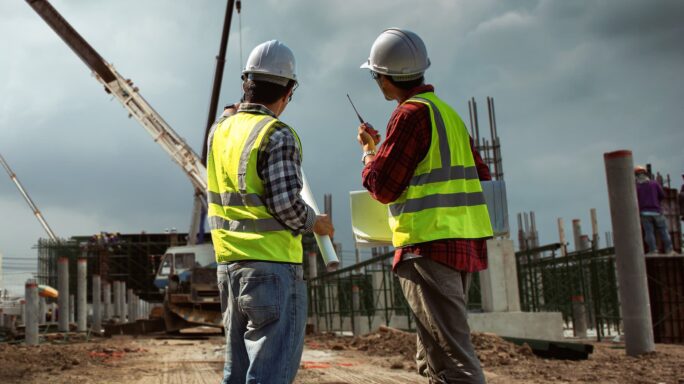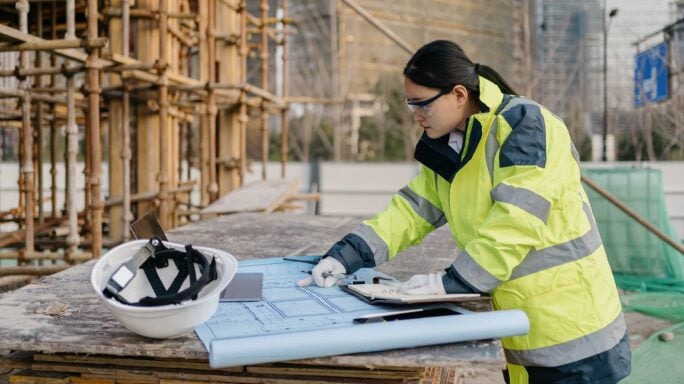Conversations in Construction: Bridging the generational technology gap
As part of the Conversations in Construction video series, Construction and Real Estate VP Dustin Stephens and industry experts examine some of the unique challenges and ground-breaking innovations in the world of construction.

Episode 3: Bridging the generational technology gap
Welcome to the third installment of our Conversations in Construction series. This series delivers actionable insights to help construction businesses weather challenges and continue to thrive.
Episode one focused on navigating the skilled labor crisis in construction. Episode two addressed utilizing technology to attract top talent.
Be sure to go back and listen if you missed them.
In episode three, we discuss bridging the generational technology gap and how businesses can position themselves for long-term success in a competitive market.
Here’s what we’ll cover
Discover Sage Construction and Real Estate solutions
Whether in your office or in the field— get the job done right every time.

The current divide
With an increase in remote work and a heavy reliance on digital communication, today’s workplace is technology driven. However, not everyone is on board.
The generational tech gap in construction is the disparity in technological proficiency and adoption of digital tools and processes among workers from different age groups.
This gap is influenced by factors such as varying exposure to technology, differing attitudes toward innovation, and diverse learning styles and preferences.
Construction businesses feel this divide as some workers embrace new technologies while others are stuck in old ways of working.
This resistance can occur among workers of all ages.
For companies to remain competitive in this era of automation, it is critical that they bring in fresh perspectives while also strengthening ties between generations.
Bring in fresh perspectives
Bring in Fresh Perspectives
It’s easy to get caught up in routine and continue doing things the way they’ve always been done. Sometimes it can help to have an outside perspective. One way to achieve that is to bring in new, diverse talent.
Looking beyond the typical talent pool can help businesses address the skilled labor shortage. It can also help cultivate a more tech-forward workforce.
Grow your workforce
Amid the qualified worker shortage, recruiting new talent is top of mind for many construction businesses. For family-owned businesses, growing the workforce often inherently includes bringing in the next generation of workers.
However, a focus on appealing to generations of workers early in their careers is a strategy that can benefit all construction businesses.
Another way businesses can expand their talent pool is by looking outside of the industry. Recruiting workers from other fields who can bring diverse skillsets to their roles.
Embracing an array of personal and professional backgrounds can also foster a culture of inclusivity and innovation.
Spark innovation
The construction industry has historically been perceived as slow to adopt new technologies.
Introducing fresh talent can help spark innovation in traditional business practices.
Early-in-career workers and those with tech-focused backgrounds are often adept at leveraging cutting-edge technologies to streamline processes, enhance safety, and optimize project outcomes.
These technologies include:
- Building Information Modeling (BIM)
- drones
- augmented reality
New entrants to the industry, particularly those with backgrounds in sustainability, environmental science, and renewable energy, can also offer new ideas for incorporating sustainable materials, reducing waste, and minimizing the carbon footprint of construction projects.
This is an important consideration as greener building practices are becoming more widespread in the industry.
Read more: 5 ways to successfully manage a multi-generational workforce
Find common ground
Finding common ground among generations of construction workers is essential for fostering collaboration, boosting productivity, and ensuring project success.
While the unique perspectives of different generations should be celebrated, change can be challenging.
It is important for businesses to acknowledge this challenge. They must anticipate resistance to this change as new ideas, technologies, and processes come into effect.
When businesses establish a supportive, forward-thinking culture, it creates an environment for teams to see eye-to-eye and embrace change.
There are several ways businesses can bring teams together despite their differences.
Support knowledge sharing and mentorship
It is important to encourage mutual respect among workers of all generations.
Each generation offers unique skills, experiences, and perspectives.
Recognizing and valuing these contributions fosters a supportive culture where team members help each other succeed.
Facilitating knowledge sharing and mentorship programs is a great way for experienced workers to pass down their expertise to colleagues.
At the same time, younger workers also have the opportunity to share their insights and knowledge.
These programs can bridge the gap between generations, promoting collaboration and skill development across the board.
Encourage clear communication
Communication is key to any successful partnership.
Businesses should establish clear communication channels to facilitate open and transparent dialogue among workers of all generations.
Encouraging constructive feedback, active listening, and collaboration across teams gives everyone a chance to contribute their ideas and insights.
Clear communication also helps to minimize misunderstandings and conflicts, fostering a more cohesive and productive work environment.
Focus on shared goals
While specific goals may vary, every successful construction business has a shared purpose of delivering high-quality projects safely, on time, and within budget.
Reminding teams of their common purpose will highlight the similarities among teams.
Focusing on a shared vision of success can help construction workers overcome differences and work together to drive progress.
Adopt a continuous improvement mindset
The construction industry is constantly changing. It’s important for businesses to evaluate processes regularly to stay agile and responsive to evolving conditions.
This flexibility allows companies to adjust their strategies, methods, and resources to meet new challenges and seize opportunities effectively.
Adopting a continuous improvement mindset can also help businesses identify inefficiencies, bottlenecks, and areas for improvement.
Sage Intacct Construction
Run your construction business with a native cloud accounting solution built for the specific needs of general contractors and real estate developers.

Build a legacy
Construction businesses can impact future generations in multiple ways.
Whether it’s carrying on the family business, creating a career path for new workers, or building structures that will be enjoyed for decades to come.
It is important for construction businesses to have a clear vision of what they want their legacy to be.
This will shape their company culture and help develop a strong reputation within the industry.
Thus, when building a successful business, people must always come first. This includes employees, clients, and other stakeholders.
Nurturing these core relationships can go a long way toward developing top talent, increasing client satisfaction, and delivering high-quality projects.
When you have happy employees and happy clients, you’re building a business that will stand the test of time and lead the industry into the future.
Learning from industry peers
As construction businesses continue to navigate the dynamic landscape, embracing change and encouraging collaboration across generations will play a vital role in unlocking innovation and driving sustainable success.
Watch Conversations in Construction: Bridging the Generational Tech Gap to hear more from my conversation with two construction leaders in family-owned businesses sharing their experience in bridging the generational tech gap and building a legacy.
Reid Bangert
Chief Operating Officer & Integrator at Bangert Computer Systems, Inc., a trusted technology advisor in the construction industry and a leading provider of financial management, estimating, document management, project management, and productivity solutions.
Bangert was founded by Reid’s father and grandfather more than 40 years ago.
Joe Murray
Managing Partner at ACT Construction, a general contracting company specializing in restaurant, retail, and other commercial construction projects.
Joe founded the company in 1987 and named it after his three children, Amy, Christopher, and Tonya. Two of them work for the business today.
Final thoughts
By embracing new ideas, prioritizing people, fostering a supportive and innovative company culture, and delivering high-quality projects, construction businesses can help bridge the generational tech gap while creating a lasting impact.
Watch episode three of Conversations in Construction: Bridging the Generational Tech Gap to learn more about how construction businesses are bringing teams together to achieve common goals.






Ask the author a question or share your advice